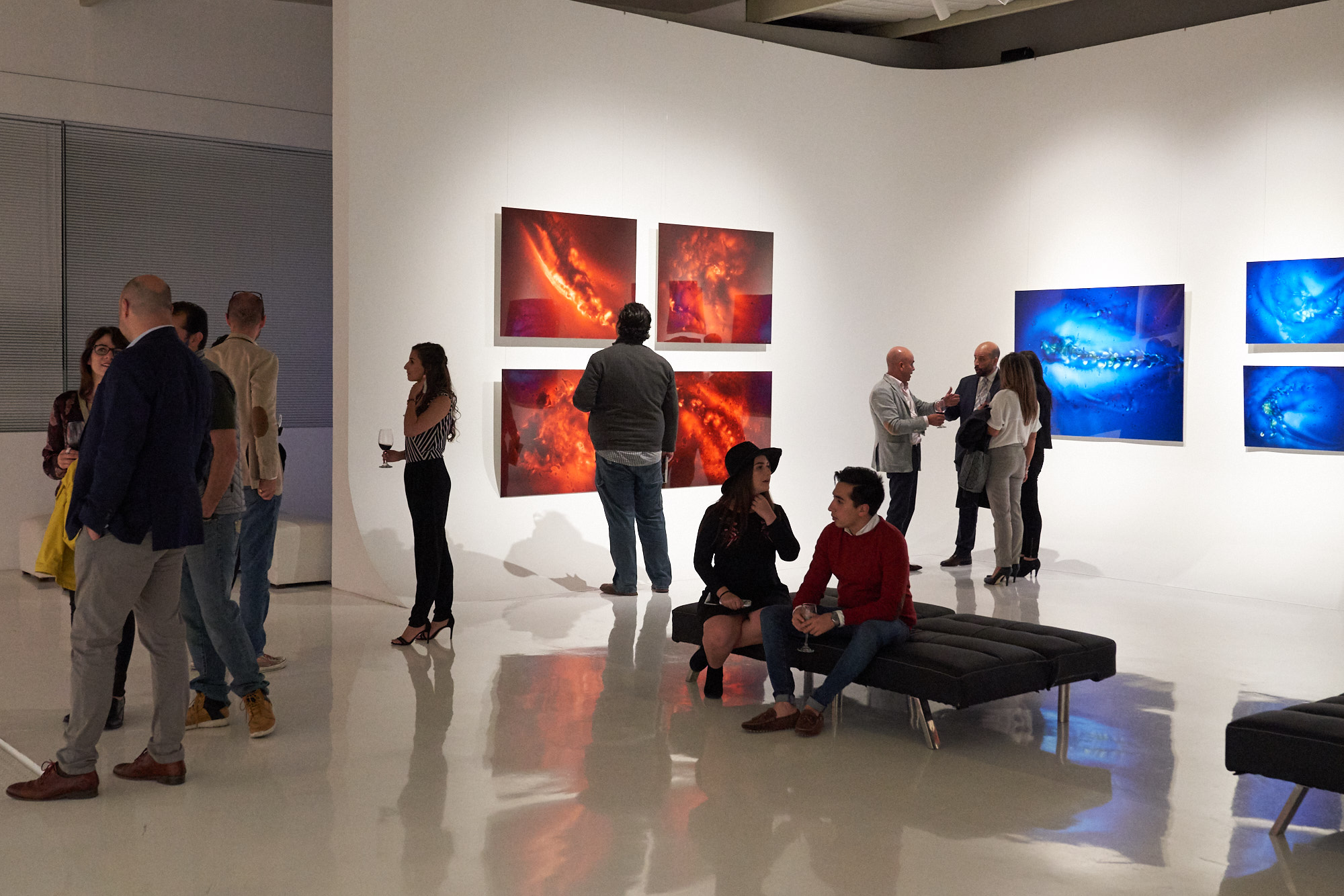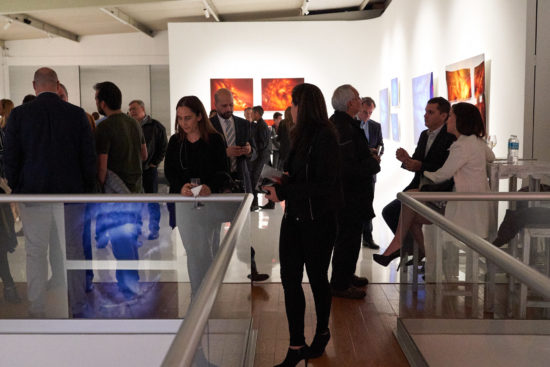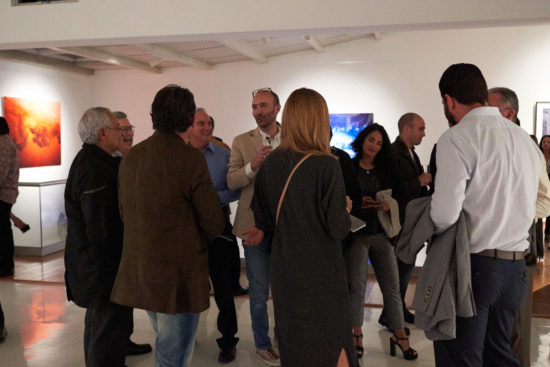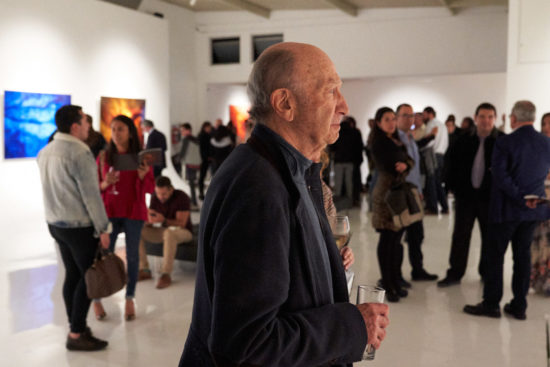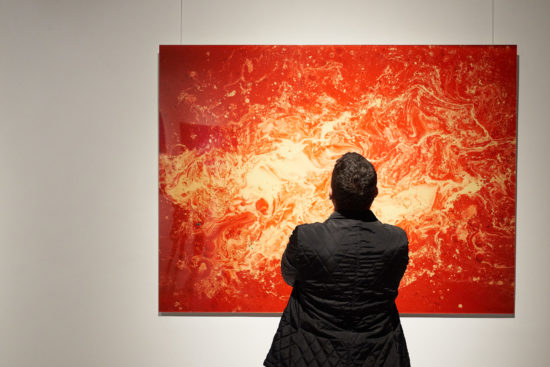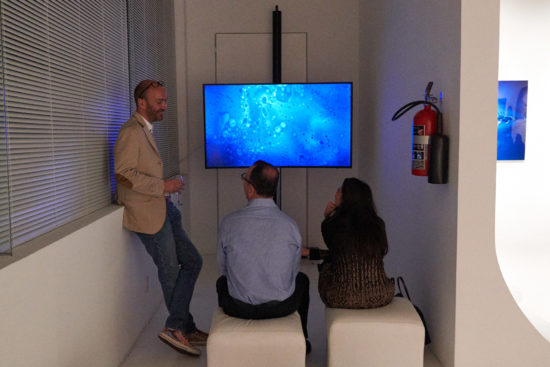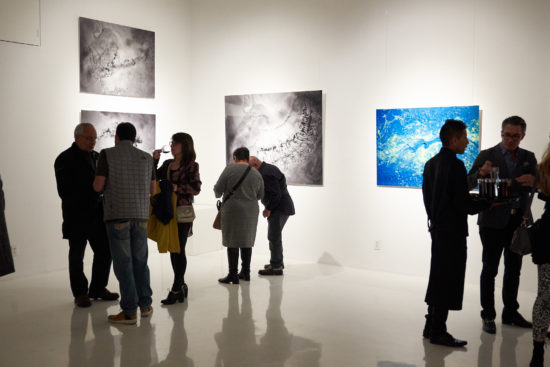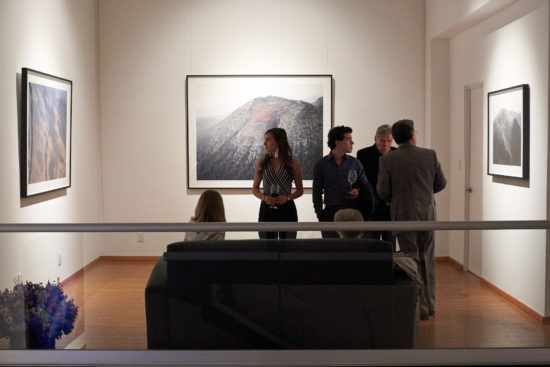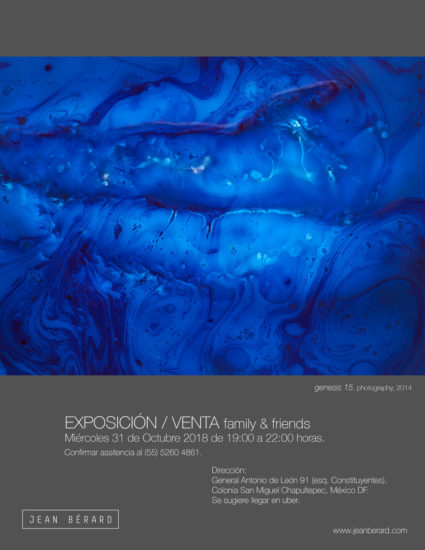
Jean Bérard
Lyon, France, 1974.
Jean Bérard’s recent photographic works focus on the exploration of two major traditions formally embedded in contemporary photography and art: abstraction and landscape. However, this exploration goes beyond the merely-formal conceptualizations: in its search for meaning, topics and concepts emerge to bring balance to the artist’s own, structured speech, in line with his concerns on the presentation/representation of photography among contemporary art.
Photographic series consisting of aqueous and oily elements are characterized by a type of laboratory research, of trial and error in nature, as performed by he who aspires to find the meaning of life through the creation and meticulous observation of the primordial soup and its behavior in the most active of states. Liquids, in their various densities, with their different chromatic or structural components, are intertwined, dispersed, and collided with the purpose of unveiling the images contained within to display a reality, almost microscopic, that deceives the human eye through its resemblance to the macrocosm.
On the other hand, with the series of mountainous, aquatic, wooded, or illuminated landscapes, Bérard assumes the role of curator and photographer of the land in its natural state, and of a human-built world. An example of this is a phenomenological study of the territory while hovering over Mexico, throughout Eastern Europe while on ground level, and sailing across the channels and seas of Southeast Europe. In this context, natural spaces, as well as rural and urban landscapes, are immortalized by photography, while gaining relevance due to their constant movement and hasty transformation.

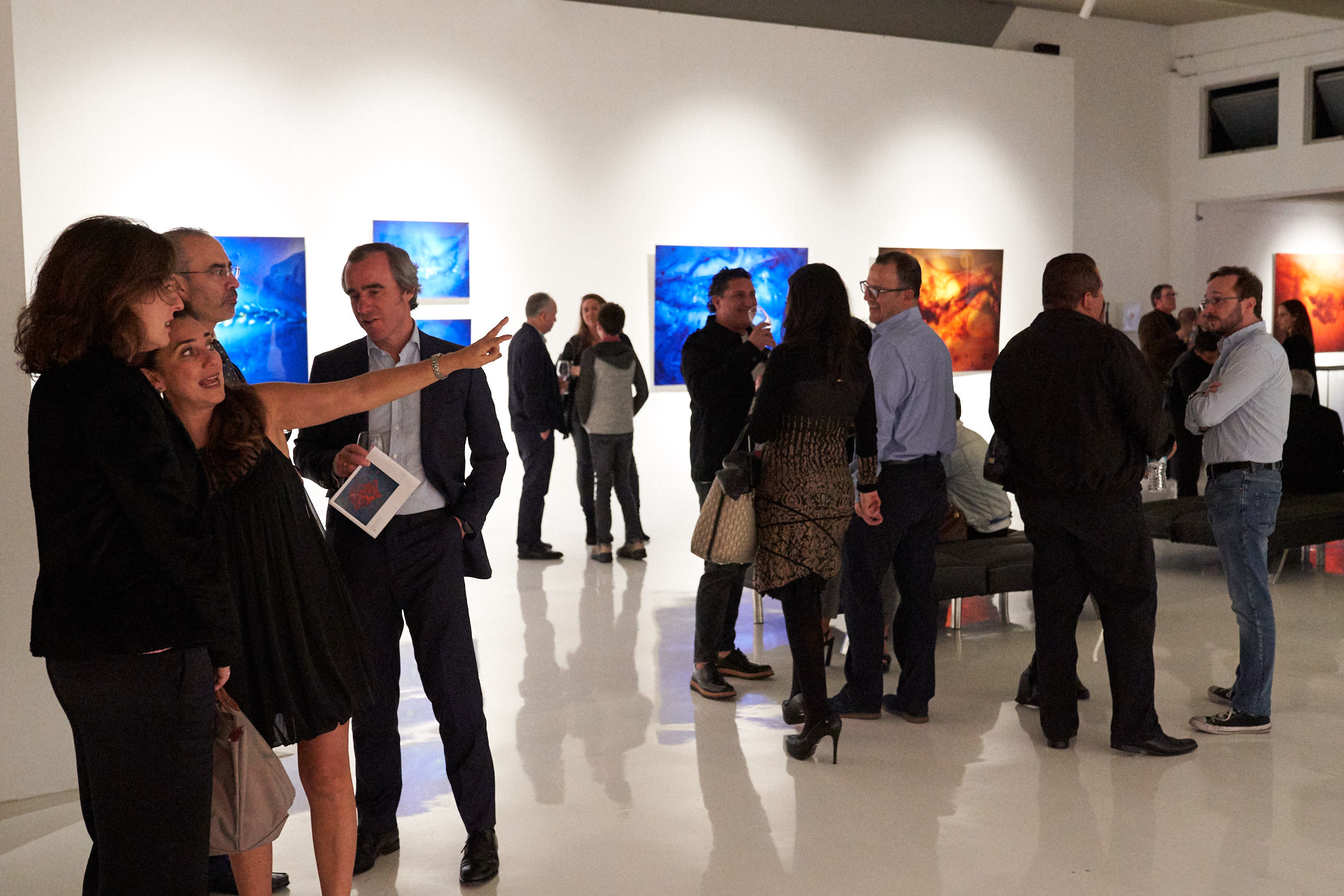
Jean Bérard
Lyon, Francia, 1974.
La producción fotográfica reciente de Jean Bérard se ubica en la exploración de dos grandes tradiciones formales de la fotografía contemporánea y el arte: la abstracción y el paisaje. Sin embargo, esta exploración va más allá de lo meramente formal: en su búsqueda de sentido, los temas y los conceptos brotan para dar equilibrio a un discurso propio y sólido que se sitúa dentro de las preocupaciones del artista sobre la presentación/representación de la fotografía en el arte contemporáneo.
A las series fotográficas que se componen de elementos acuosos y oleosos las caracteriza una especie de investigación de laboratorio, de la prueba y del error, como de quien aspira a encontrar el origen de la vida a través de la creación y la observación minuciosa del caldo primordial y de su comportamiento en su estado más activo. Los líquidos, en sus diversas densidades, con sus diferentes componentes cromáticos o estructurales son mezclados, arrojados e impactados con el fin de desvelar las imágenes contenidas en su interior y para mostrar una realidad casi microscópica que engaña al ojo humano por su parecido con el macrocosmos.
En cambio, con las series de paisajes montañosos, acuáticos, arbolados o luminosos, Bérard asume su papel de observador y fotógrafo de la tierra en su estado natural, y del mundo creado por los humanos. Como ejemplo de esto, realiza un estudio fenomenológico del territorio sobrevolando México, recorriendo Europa Occidental al nivel de la tierra, y navegando sobre canales y mares del sureste europeo. De esta manera, los espacios naturales, los rurales y los urbanos son recuperados por la fotografía, al mismo tiempo que van cobrando relevancia por su constante movimiento y su apresurada transformación.
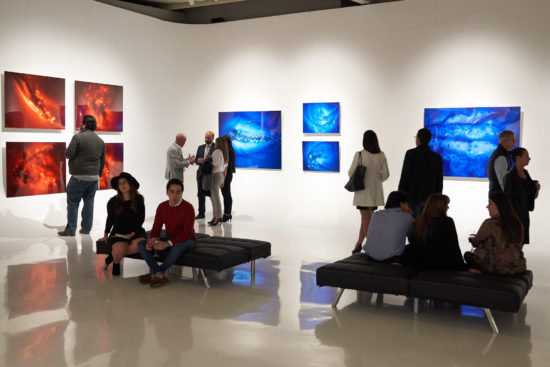
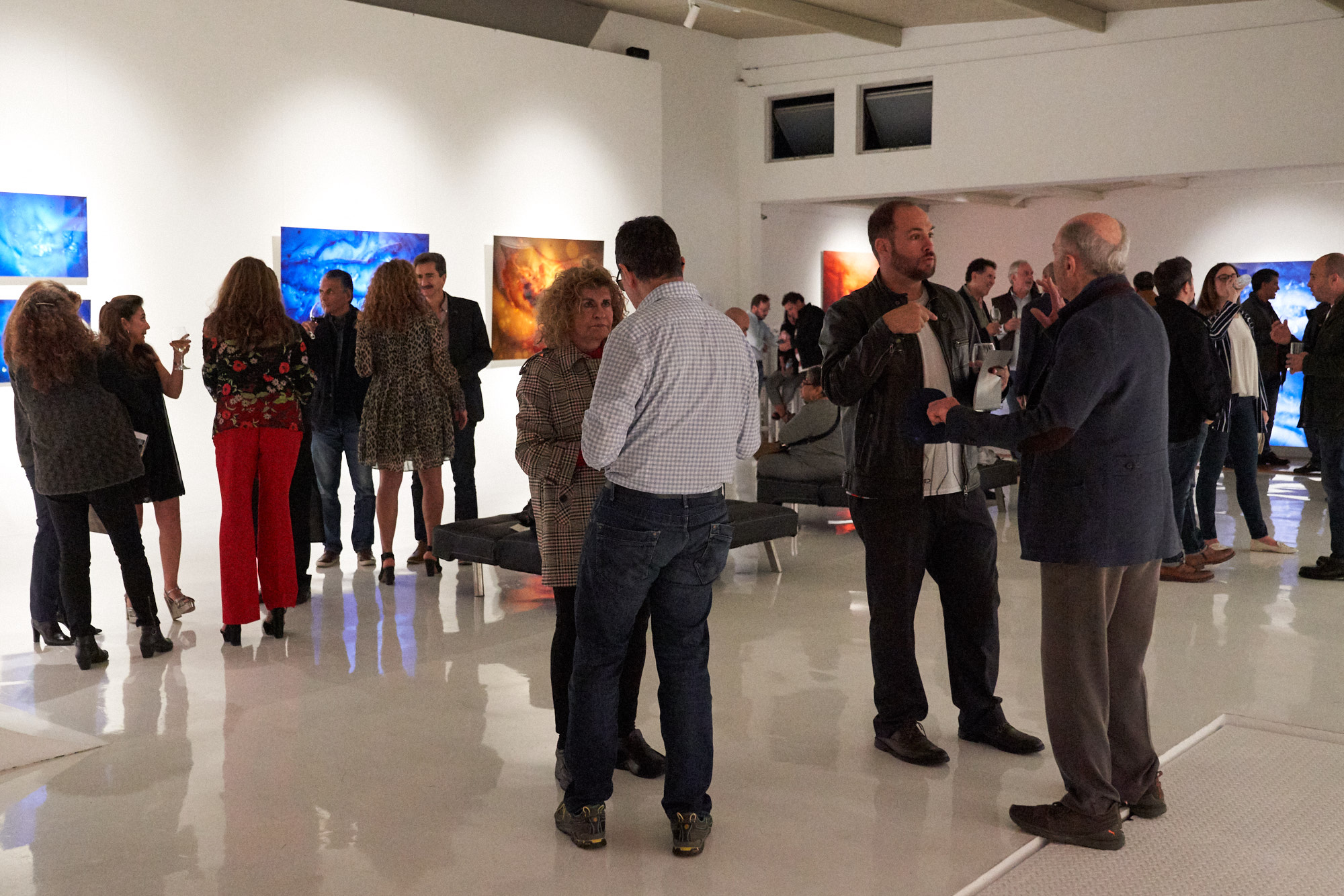
See the expo catalogue
